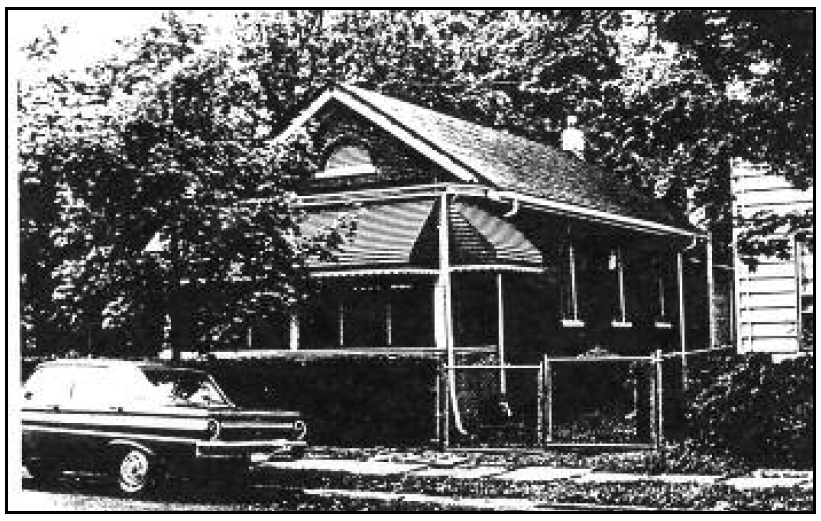19th Century School For African-american Children To Become A Heritage Center
Submitted by Al Shipley, City Historian and Rahway Library Research Consultant
Few residents realize that the small, unassuming, one-story red brick home on Central Avenue near the corner of Esterbrook Avenue was built in 1844 to serve as a school house for the African-American children of Rahway. Today it represents the oldest standing school in the city and possibly one of the oldest in Union County and perhaps even in the state. The building was recently purchased by the congregation of Ebenezer A.M.E. Church, whose plans are to restore the structure and eventually create an African-American History and Heritage Learning Center.
The history of the building and school goes back to the late 1700s and is tied in with the Society of Friends (Quakers), who at that time were a very active religious group in the city. The Quakers, who were involved with many social issues and promoted education, had built the first school in the area in 1785. With a concern for the education of children of the poor, one member, Miss Isabel Hartshorne, willed approximately ₤200 to establish a trust fund to be used to address this particular need.
A few decades later, in 1844, construction of a one-room school house was started after the newly formed Trustees for the Rahway School for Colored (sic) Children received the monies that had been placed in the Quaker trust fund. An early record notes that as many as thirty children attended classes in the new school and that the school year ran for eleven months. G. McKinney was listed as an early teacher.
The school was built on the property owned by Jacob R. Shotwell, a prominent figure in Rahway who was president of the Rahway Gaslight Company and vice president of the Rahway Savings Institution (RSI Bank). The New Jersey State Legislature assisted the school by passing a bill making it possible for the trustees to procure money out of the funds set aside for the public schools. With the passage of the legislation, a number of trustees made a request to the Board of Education that they assume the administration of the school, but the terms of Miss Hartshorne’s original will prohibited such a union.
In 1872 the school was finally placed under the auspices of the city school system, although it would continue to be run as a separate institution. City directories of the period list Matilda Putnam as principal. Ms. Putnam had been a well-respected teacher in the Rahway system for many years and once the Board of Education took control of the school, she was assigned to the leadership position.
In 1882 the Rahway Public Schools were integrated and the building’s service as a colored (sic) school came to an end. Before the school’s doors were closed, however, Mrs. Lucy Eddy, a local philanthropist, established the Rahway School for Colored (sic) Children Trust Fund in the amount of $6,000. Following her death in 1879 and the school’s closing three years later, the fund was transferred to the Rahway Public Library who used the donation to restore books held in their collections.
By the late 1800s, the building was purchased by an individual to be used as a private residence. In the 1930s an addition was attached to the rear of the home which included a kitchen and a bathroom. A jalousie porch, which hides the original center entrance, was added sometime before the mid-1900s. Notwithstanding the modern additions, characteristics including the fieldstone foundation, stone sills, semicircular vent under the front gable, and brick exterior attest to the building’s age and help to maintain its structural and architectural integrity.
The congregation of Ebenezer A.M.E. is excited about the opportunity to reclaim and preserve this important piece of history. After the building is restored to feature its original characteristics, members of the church plan to invite individuals and organizations to come forward and share artifacts and information related to the school and/or African-American history with a goal of creating an important and unique History and Heritage Learning Center and Museum.


